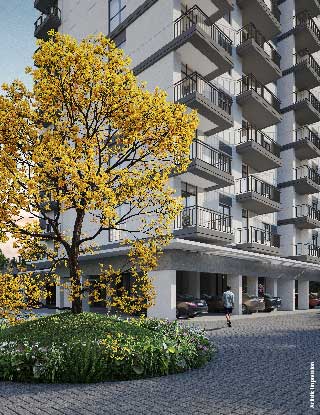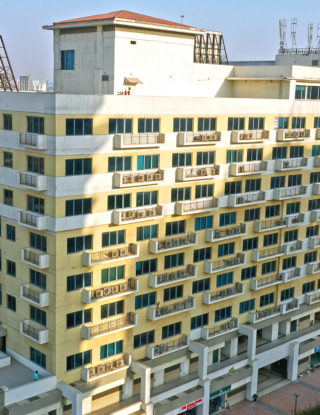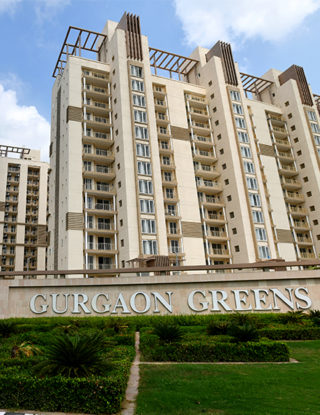The real estate industry in India has always been the foremost investment portal for the average Indian citizen. The rationale behind this is simple, real estate assets in the country have always been considered a tangible and stable asset, as compared to other volatile financial assets. Historically, it was the residential spaces that were popular among the general populace as the commercial space was usually perceived as too costly and complicated to invest in.
However, the maturation of the real estate industry, with the increased transparency and regulation in the sector owing to the government’s stringent policies, and the emergence of Real Estate Investment Trusts (REITs) in the Indian framework, has piqued a renewed interest in this byzantine asset class. Today, therefore the commercial sector is no more relegated to be purely the terrain of wealthy industrialists or corporations, with the middle class taking advantage of the new industry ecosystem.
Now, the question is why should you invest in commercial spaces over residential ones when the latter has been considered the invariably go-to, ‘risk-free’ investment. This article intends to provide you with a concrete answer to this query.
● Income Generation:
The real industry in general is considered a judicious source if you are looking into investing in an asset to generate a secondary, passive source of income. However, while the residential spaces in the country average a rental yield of 3-5% annually of the market value of the property, commercial spaces’ rental yield is usually at 6-10% annually.
Further, it would be remiss to disregard the verity that capital appreciation of a commercial property when chosen astutely, is far greater than that of a residential space.
● Stalwart Tenancy:
One of the primary advantages of investing in a commercial asset is the longer leasing agreements. According to industry standards, leasing agreements in commercial space are usually a minimum of three years, and usually range from five to ten years, with period payments ensuring a stable source of passive income for the long term. Further, the leasing agreements also have clauses for rental appreciation and lease renewal, in case the space is required by the same tenant. Besides the stability provided by the agreement, commercial spaces are rented out by businesses and are thus likely to make the rent payment a hassle-free process.
On the other hand, residential space tenancies are a lot more volatile, with the risk of frequently changing tenants as well as the rental yield often being subject to market dynamics in contrast with the iron-clad leasing agreement which protects the asset owner from any changes in the yield mid-lease.
● Government Initiatives:
In recent years, the Indian Government has made momentous headway in revolutionising the facade of the real estate industry. With policies like the Smart Cities Mission, programmes like ‘Make in India’, ‘Digital India’, and ‘Production Linked Incentive’ schemes, the investment landscape of the country has completely transformed.
Today the country boasts of impressive IT/ITes and business hubs, expanding well beyond its extant playfield of the country’s metropolitans to its Tier 2 and Tier 3 cities. A direct corollary of the government’s efforts to develop the core infrastructure in these areas has indeed paid off with these heretofore ‘peripheral cities’ developing into thriving micromakrets.
In addition to this, the government’s induction of programmes such as RERA which has served to digitize land registries and market data has served to instill an added veneer of transparency in the dealings in the Indian real estate sector, by ensuring that there are no hidden costs in the dealing of real estate. This has served to instill a sense of confidence in both the veteran investors and those who the first-time investors in the sector.
As a cumulative outcome of these initiatives, the Indian economy witnessed the highest annual FDI inflows of $84,835 mn in FY 21-22, which is evident in the bolstering of occupier confidence and capital deployment in the commercial sector.
● Return to Office Spaces:
While the pandemic was greatly detrimental to the global economy, it has definitely led to a rise in new demand for commercial assets like coworking and flexible spaces. Further, the rise of the e-commerce industry has led to a great demand for warehouses in the contemporary framework.
In addition to this, the return of the workforce to office spaces has resulted in demand for commercial spaces gaining momentum, with the Indian commercial property landbank set to surpass 50 million sq. ft by the end of 2023.
Final Thoughts:
The present Indian economy, with the real estate industry primed to attain USD$1 trillion by 2030, provides with you the ideal opportunity to invest in the commercial sector. However, when you do think of investing in commercial real estate, it is pivotal to invest with a brand that has a well-established reputation of efficiency and an impressive portfolio to back it up.
Emaar India, with its vast offering of commercial properties in India, is the epitome of such a brand. With a legacy of intelligent architecture and luxurious designs, you can be assured that you are investing in the most premium commercial space.
In addition to providing all the advantages stated above, Emaar’s unmatched services and world-class facilities provided at its commercial properties, makes them stand a class apart from the rest. If you are looking to invest in commercial properties in a holistic and lucrative ecosystem, Emaar India is the way to go.





















